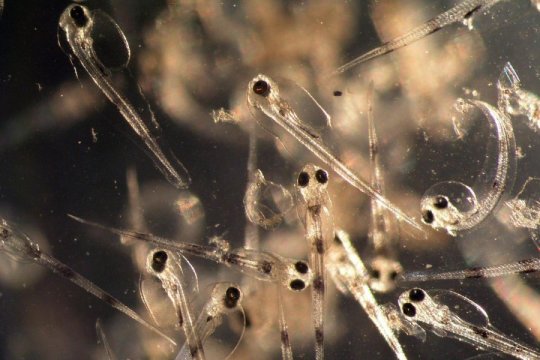[ad_1]
Acidification is, next to rising temperatures and dwindling oxygen concentrations, one of the major threats to marine life due to the changing global climate. Carbon dioxide concentrations in the atmosphere are rising and the ocean therefore takes up increasing amounts of CO2 from the atmosphere as well. The reaction of carbon dioxide with the water forms carbonic acid, the pH is lowered — the ocean becomes more acidic.
To what extent and how ocean acidification affects the marine ecosystem as a whole is incredibly hard to predict, but evidence is accumulating that some species are affected adversely. One of these species is the Atlantic cod. A new scientific study, which was just published in the scientific journal Global Change Biology by scientists from the GEOMAR Helmholtz Centre for Ocean Research Kiel with colleagues from France and Norway, as well as previously published articles show that the high carbon dioxide concentrations damage this species, particularly the early life stages, like eggs and larvae.
The previously published paper by these scientists has shown that due to ocean acidification less cod larvae survive, which means less individuals mature and reproduce. “So far, we liked to believe that at least the larvae that survived would be able to deal with these conditions,” says Dr. Martina Stiasny from GEOMAR, first author of this study, “and could have across generations allowed the species to adapt.” The results of the new study defeat this hope.
It shows that even the surviving larvae have significant organ damages and developmental delays. “Especially the development of the gills is worrying. Compared to the body size, they are underdeveloped,” explains Dr. Catriona Clemmesen, corresponding author of the study and leader of the larval ecology group at GEOMAR. Gills, like the lungs in humans, are an extremely important organ, which not only regulates the oxygen uptake, but in fish is also responsible for the adjustment of the internal pH. Underdeveloped gills are therefore likely to negatively affect the individuals throughout their development and following life stages.
Another paper, published last year in Scientific Reports, has already shown that the acclimation of the parental generation to high carbon dioxide concentrations only yields a benefit to the offspring, if prey concentrations are very high. “These ideal situations are very unlikely to be encountered by the larvae in nature,” says Dr. Clemmesen. In more realistic food conditions, exposing the parental generation to acidification lead to an even worse health status of the larvae.
“Our results are of particular importance, since the Atlantic cod is one of the most important commercial fish species worldwide. It therefore not only supports a large fishing industry but is furthermore an important source of protein for many people,” summarizes Dr. Stiasny. “Dwindling populations would have far reaching consequences not only for the environment and marine ecosystems, but also for the fishermen, the industry and human nutrition.”
Story Source:
Materials provided by Helmholtz Centre for Ocean Research Kiel (GEOMAR). Note: Content may be edited for style and length.
[ad_2]















